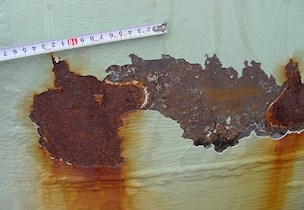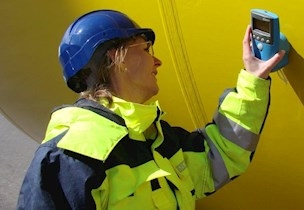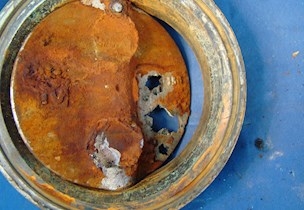Ensuring corrosion protection quality of components for Ørsted's offshore wind farm in Taiwan
To support the quality and durability of components for offshore use in Taiwan, Ørsted engaged FORCE Technology as an impartial third party to carry out quality assurance.
Ørsted is a pioneer in offshore wind and sustainable energy, and the company knows what it takes for offshore installations to last.
For this project in Taiwan, the company sought the assistance of a third party to handle quality assurance for an anti-corrosion surface treatment applied to critical components of the Greater Changhua offshore substation. The goal was to ensure high corrosion resistance, minimise defects, and strengthen collaboration with suppliers.
More specifically, the components in focus were two transformers and two shunt reactors for the offshore substation. These units play a critical role in collecting green electricity generated by the wind turbines and converting it to the appropriate voltage and frequency before transmission to shore.
Optimal corrosion protection for a highly corrosive environment
Offshore installations are constantly exposed to extreme conditions in which moisture and salt accelerate corrosion. This makes it crucial to ensure that components have appropriately protected surfaces – not only by selecting the right painting system but just as importantly by thoroughly following each step in the procedure, ensuring correct surface treatment and applying each coating type and layer precisely.
While third party oversight does add costs, it is a preventive measure that reduces the risk of corrosion by verifying that the process is followed correctly. Ensuring high-quality workmanship from start to finish helps minimise the need for offshore repairs in the component's lifetime.
Repairs at sea come with significant logistical challenges, including personnel and equipment transportation, unproductive hours in bad weather, and sub-optimal climate conditions, including temperature, humidity, and constant salt contamination.

Thorough quality assurance throughout the production process
A systematic approach to quality assurance is necessary to ensure adherence to all specifications. There are many steps involved in corrosion protection, such as inspecting welds and removing spatter, sharp edges, and cavities. These make it possible to properly clean the steel and achieve the correct coating layer thickness.
The sandblasting is inspected, and each layer of coating is checked to ensure that it meets the specifications. Finally, a factory acceptance test (FAT) is performed to ensure that all of Ørsted's technical requirements have been met. Any damage that occurs at this stage is also repaired.
"Good corrosion protection requires precise processes and skilful work every step of the way. If the steel doesn't have the right roughness and isn't properly cleaned after sandblasting, or if the coating is applied incorrectly, the desired durability won't be achieved," Nana Eckhardt, specialist and FROSIO level III inspector at FORCE Technology, explains.
Corrosion protection and packaging go hand in hand
In addition to the surface treatment, FORCE Technology also focused on protecting the components during transport. If the components are not properly packed, the anti-corrosion surface treatment can be compromised before the components are even installed.
For this reason, systematic component packing and handling inspections were conducted to minimise the risk of damage in transport.
"The advantage of having FORCE Technology present at the supplier's facility throughout the process is that we can continuously inspect and monitor the work being performed. If we notice any issues, we can provide a solution right away, so corrective action can be taken immediately and under optimal conditions," Nana Eckhardt says.
Trust and a positive atmosphere with an impartial third party
While Ørsted is capable of handling quality assurance on its own, the company chose FORCE Technology as an impartial third party for these inspections. This freed their internal resources to focus on other aspects of the project while also providing specialised, objective oversight.
FORCE Technology's inspectors served as a neutral party in the process, objectively identifying any deviations from the project specifications. Thanks to this neutrality, Ørsted and its suppliers could engage in a more constructive, fact-based dialogue, making aligning on necessary corrections and improvements easier.
"When you choose FORCE Technology as a third party, everybody involved has a common point of reference. That makes the process more efficient and reduces the required discussion," Nana Eckhardt says.
"With all the facts on the table, everybody can focus on finding solutions to problems as they come up. We've also found that as the process goes on, the suppliers start coming to us on their own to get our input if they're unsure whether something needs to be changed."
Mindful planning and flexible inspections
Good planning and transparency between all involved parties made it possible to plan inspections flexibly. FORCE Technology's inspectors monitored production in several supplier locations simultaneously, enabling them to handle quality assurance without delaying production.
Ørsted received daily reports, as well as a final summary with suggested improvements for the suppliers, providing opportunities for learning and optimisation for future projects.
Services

Consultancy on specification for coating
Selecting an effective coating ensures a proper protection of your steel construction.

FROSIO-certified coating inspection
Make sure the surface finish on your steel structure is well done and remains intact and effective.

Corrosion and materials examinations
Corrosion and material data helps you in relation to design, product knowledge, and product failure.


